At a time when the textile industry is developing rapidly and driven by circular economy policies, the textile waste shredder has become a key equipment in the recycling chain of textile solid waste (such as used clothes, defective fabrics, and home textile scraps). This article will professionally analyze its technical details and application points from the dimensions of equipment principle, core configuration, process adaptability, and associated equipment (textile shredder).
1. Application Scenarios and Material Adaptability of Textile Waste Shredders
Textile waste shredders mainly serve garbage recycling plants, environmental treatment companies, resource recycling enterprises, and textile recycling processing parks, and realize efficient crushing for the following materials:
• Soft textile waste: waste cloth ends (pure cotton, chemical fiber blended, etc.), waste cotton yarn, used clothes (T-shirts, knitted shirts, etc.), cotton lint, and non-woven fabric scraps;
• Medium and hard textile waste: linen fragments, denim fabric scraps, chemical fiber carpet fragments, etc.
The equipment realizes the processing of materials to the particle size specification suitable for subsequent recycling (such as opening and spinning, granulation and felting) through the composite crushing process of "shearing + tearing".
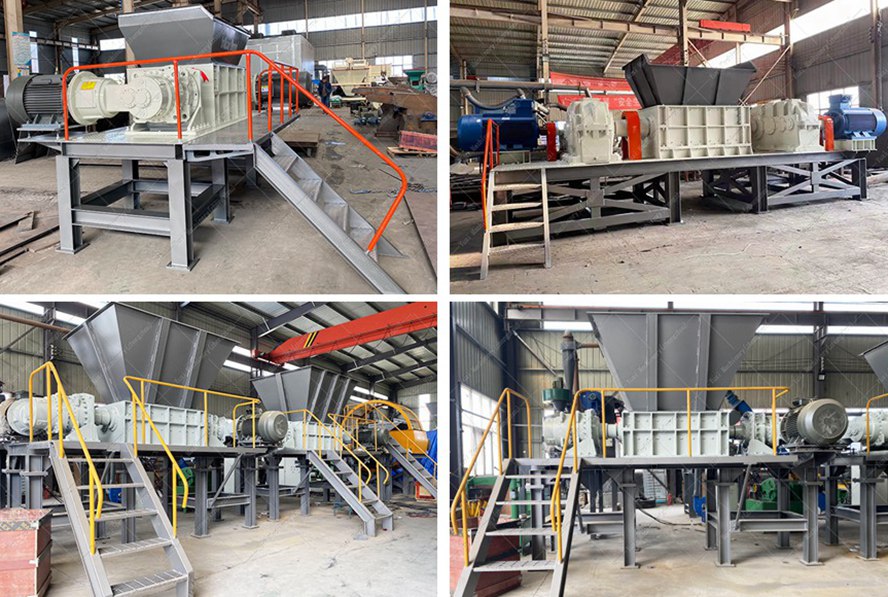
2. Working Principle and Core Structure of Textile Waste Shredders
1. Double-Shaft Shearing Crushing Principle
The equipment adopts the power transmission and shearing structure of a double-shaft shredder: the motor drives the reducer to output torque, which is transmitted to the moving knife shaft of the shredder; the "hook-tooth structure" on the moving knife can effectively hook the textile fiber materials, and the fixed knife of the opposite roller is like a scissor edge, cutting and tearing the waste layer by layer. After crushing, the materials are discharged from the bottom discharge port of the equipment after pre-screening, and the whole process realizes the automatic process of "continuous feeding—shearing and crushing—particle size control".
2. Core Structure Configuration
• Knife Shaft and Blade System: The blades are made of AISI D2 high-carbon alloy tool steel (after vacuum quenching, the hardness reaches 58-60 HRC), and the edge is designed in a composite shape of "sawtooth + flat edge"—the sawtooth structure is used to quickly bite into the fiber, and the flat edge is responsible for deep shearing to ensure uniform crushing of different texture fabrics (plain weave, twill, etc.);
• Rack and Crushing Chamber: The main frame is made of ASTM A500 Grade C rectangular pipe welded structure, whose strength is increased by 40% compared with the ordinary channel steel frame, and the stability of the equipment operation is greatly enhanced; the inner wall of the crushing chamber is made of AR400 high-strength wear-resistant steel plate (thickness ≥ 20mm), and is strengthened by heat treatment, and its service life is extended by 2-3 times compared with ordinary steel plates;
• Bearing and Transmission System: It is equipped with heavy-duty bearings of imported brands such as SKF and NSK, which can withstand the impact load during the crushing of textile waste, and the transmission gear is carburized and quenched, and the transmission efficiency is stable above 92%.
3. Textile Shredder: Pre-Process Equipment for Textile Waste Shredder
The textile shredder (also known as the used fabric shredder) is a rough crushing equipment before the textile waste enters the shredder, and is suitable for the following scenarios:
• Processing large-sized textile waste: whole pieces of residual cloth, old quilts, thick carpets, etc., which are shredded into pieces of 4-12 inches to reduce the feeding load of the shredder;
• Preprocessing of textile materials containing impurities: For used clothes with metal accessories (zippers, buckles), the shredder is equipped with a metal detection and avoidance mechanism, which can temporarily adjust the gap between the knife rollers to avoid hard metals from damaging the knives of subsequent shredders.
In short, the textile shredder and the shredder form a "rough crushing + fine grinding" process combination, which increases the crushing efficiency of high-thickness and large-sized textile waste by more than 30%.
4. Performance Characteristics and Process Advantages of Textile Waste Shredders
1. Crushing Optimization for Soft Materials
The equipment has been specially designed for the characteristics of "easy to entangle and strong toughness" of textile fibers:
• The feed port is equipped with an anti-entanglement dial roller (with Teflon anti-stick coating on the surface), which evenly disperses the waste into the crushing chamber through the spiral tooth shape to avoid fiber agglomeration and jamming;
• The speed and torque of the knife shaft are accurately matched (speed 1200-1800 rpm, torque 1500-7500 N·m according to the model), ensuring sufficient shearing force for high-toughness chemical fiber materials, and the fiber length loss rate after crushing is <15% (meeting the requirements of recycled spinning for fiber length).
2. Production Capacity and Stability Advantages
• Crushing capacity: Small and medium-sized models can process 1-5 tons of textile waste per hour, and large units (such as double-shaft four-knife roller configuration) can reach 10-20 tons per hour;
• Operation stability: The frame structure is optimized by finite element analysis, the equipment vibration amplitude is ≤0.5mm/s, and the bearing seat adopts a sealed dust-proof design, which effectively prevents textile dust from entering and reduces the maintenance frequency.
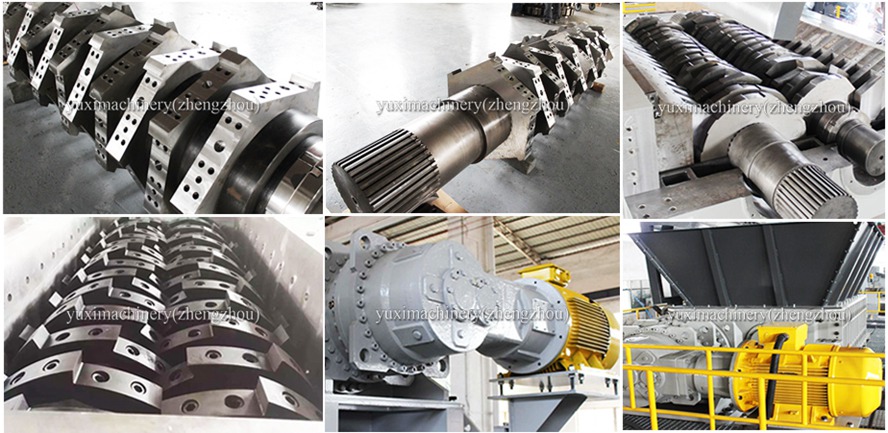
5. Key Points of Equipment Selection and Production Operation and Maintenance
1. Principle of Selection and Matching
• Processing high-fiber and low-impurity waste (such as pure cotton scraps in garment factories):preference "high-speed + small-gap" models (speed 1500-1800 rpm, blade gap ≤2mm) to ensure the fiber length retention rate;
• Processing multi-material and high-impurity waste (such as used clothes recycling materials):choose "low-speed + strong wear-resistant" models (speed 900-1200 rpm), and equip with an air separation module to separate metal, plastic and other impurities.
2. Operation and Maintenance and Quality Control Suggestions
• Regularly (every 500 tons of materials processed) grind the edge of the blade, and after grinding, use the "standard cotton sample crushing test" to ensure that the crushing particle size uniformity (deviation ≤±5%);
• When crushing textile waste with a moisture content >15%, it is necessary to turn on the heating and drying auxiliary module of the equipment (temperature set at 140-176°F) to prevent wet fibers from adhering to the cavity wall;
• Establish a "current-load" monitoring mechanism. If the equipment operating current fluctuates >±10%, immediately check the feeding uniformity or tool wear.
6. Frequently Asked Questions (FAQ)
Q1: Can the textile waste shredder process blended fabrics (such as cotton-polyester blended waste)?
Yes. The torque configuration of the equipment blade and knife shaft has considered the toughness difference of blended fabrics. As long as the feed particle size is within the allowable range of the equipment (≤80% of the feed port size), efficient crushing can be achieved. However, it should be noted that chemical fibers such as polyester have a low melting point, and the temperature rise of the cavity should be controlled ≤248°F during crushing to avoid fiber melting and agglomeration.
Q2: What is the core difference between a textile shredder and a textile waste shredder?
The core difference between the two lies in the crushing particle size and application scenario: the shredder aims at "rough crushing and volume reduction" to shred large-sized materials into pieces; the shredder aims at "fine crushing and meeting the particle size of the recycling process" to further process the pieces into fibers or fine fragments. In terms of process, the shredder is usually used as the pre-equipment of the shredder.
Q3: What parameters should be paid attention to in the downstream recycling granulation process for crushed textile waste?
If used for chemical fiber granulation, it is necessary to ensure that the crushed material particle size is within the range of 0.4-0.8 inches, and the fiber is evenly dispersed (agglomeration rate <5%); if used for recycled spinning, the fiber length should be ≥0.4 inches, and the impurity content should be ≤0.3% (which can be achieved through the sorting system supporting the shredder).
The technical details of the textile waste shredder ultimately serve the goal of "efficient resource utilization of textile solid waste". Whether it is equipment procurement or process design, grasping the three principles of "material adaptation, process matching, and fine quality control" can maximize the value of waste in the textile circular economy.
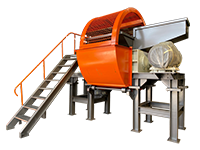 Shredding Machine
Shredding Machine
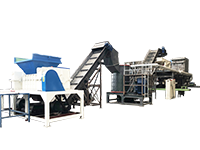 Waste Recycling Line
Waste Recycling Line
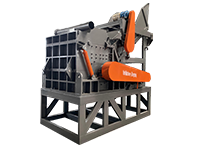 Optional Equipment
Optional Equipment


